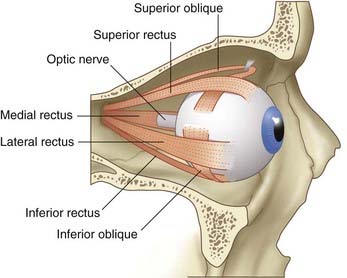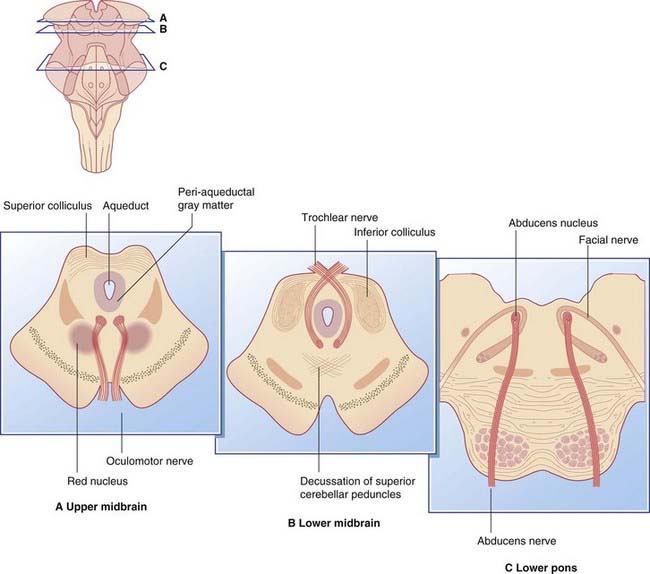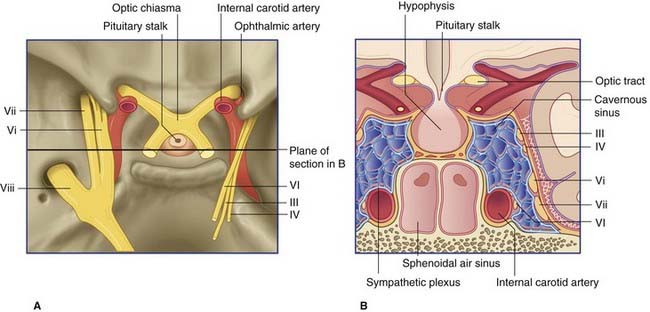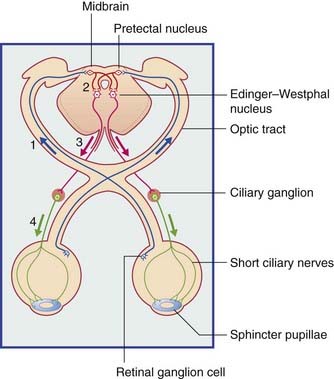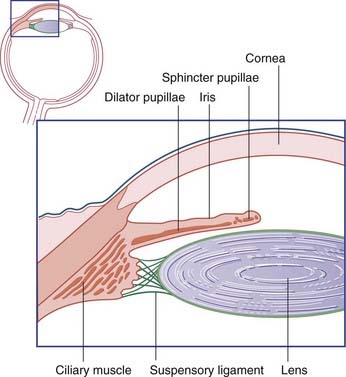23 Ocular motor nerves
The Nerves
The ocular motor nerves comprise the oculomotor (III cranial), trochlear (IV cranial), and abducens (VI cranial) nerves. They provide the motor nerve supply to the four recti and two oblique muscles controlling movements of the eyeball on each side (Figure 23.1). The oculomotor nerve contains two additional sets of neurons: one to supply the levator of the upper eyelid, the other to control the sphincter of the pupil and the ciliary muscle.
Oculomotor nerve
The nucleus of the third nerve is at the level of the superior colliculus. It is partly embedded in the peri-aqueductal gray matter (Figure 23.2A). It is composed of five individual nuclei for the supply of striated muscles, and one parasympathetic nucleus.
Trochlear nerve
The nucleus of the fourth nerve is at the level of the inferior colliculus. The nerve itself is unique in two respects (Figure 23.2B): it is the only nerve to emerge from the back of the brainstem; and it decussates with its opposite number.
The IV nerve winds around the crus of the midbrain and travels through the cavernous sinus in company with the III nerve (Figure 23.3). It passes through the superior orbital fissure and supplies the superior oblique muscle.
Abducens nerve
The nucleus of the sixth nerve, in the floor of the fourth ventricle, is at the level of the facial colliculus, in the lower pons (Figure 23.2C). The nerve descends, to emerge at the lower border of the pons, and runs up the pontine subarachnoid cistern beside the basilar artery. It angles over the apex of the petrous temporal bone and passes through the cavernous sinus beside the internal carotid artery (Figure 23.3). It enters the orbit through the superior orbital fissure and supplies the lateral rectus muscle, which abducts the eye.
Pupillary Light Reflex (Figure 23.4)
Constriction of the pupils in response to light involves four sets of neurons, as follows:
Accommodation
The near response
When the eyes view an object close up, the ciliary muscle contracts reflexly, thereby relaxing the suspensory ligament of the lens (Figure 23.5). Since the lens at rest is somewhat compressed (flattened) by tension exerted on the lens capsule by the suspensory ligament, the lens bulges passively when the ciliary muscle contracts. The thicker lens has the greater refractive power required to bring close-up objects into focus on the retina. The response of the lens is one of accommodation.
Stay updated, free articles. Join our Telegram channel

Full access? Get Clinical Tree


